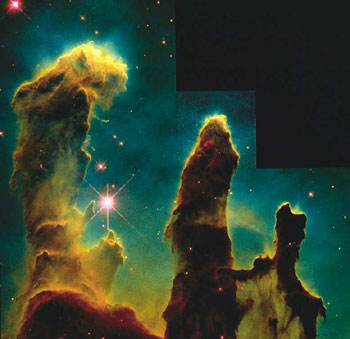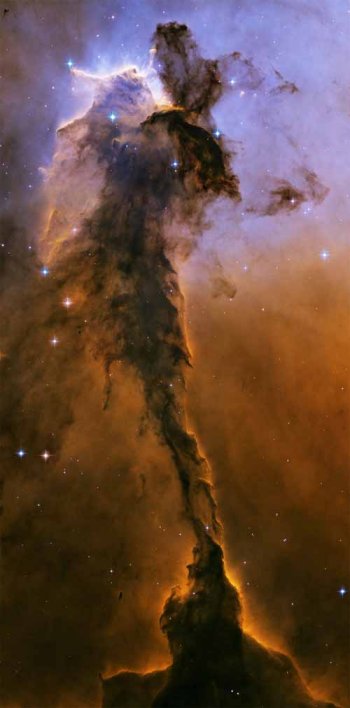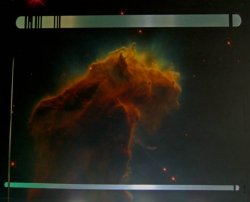Eagle Nebula

The famous 1995 Hubble Space Telescope photo of the "pillars of creation" that has appeared on magazine covers, postcards, and computer desktops worldwide.

A spire within the Eagle Nebula 9.5 light-years long – twice the distance from the Sun to the nearest star.
The Eagle Nebula (IC 4703), also known as the Star Queen Nebula, is a diffuse
nebula in the constellation Serpens, discovered
by Charles Messier in 1764. The Eagle Nebula
(IC 4703) is an active region of star
formation that gave birth to the open cluster M16 (NGC 6611) about 5.5 million years ago and is now illuminated by the hot
stars of this cluster. It is located within the Sagittarius
Arm – the next inner spiral arm of the Milky Way Galaxy to us.
One of the most stunning photos taken by the Hubble Space Telescope is of
the so-called "pillars of creation" in the Eagle – dark columns of
gas and dust, also known as elephant trunks, reaching into
the brighter parts of the nebula. At the end of each pillar, the intense
ultraviolet light of newborn stars is photovaporizing some of the hydrogen
gas and shaping structures called EGGs (evaporating gaseous globules).
| visual magnitude | 6.4 |
| angular size | 7' |
| linear size | 70 × 55 light-years |
| distance | 7,000 light-years |
| position | RA 18h 18 m 48s, Dec -13° 49' |
| Science fiction connections |
|---|

|
| The top of one of the "pillars" of the Eagle Nebula is one of the astronomical images displayed in the Astrometrics Lab aboard the starship Voyager in the TV series Star Trek Voyager. |

